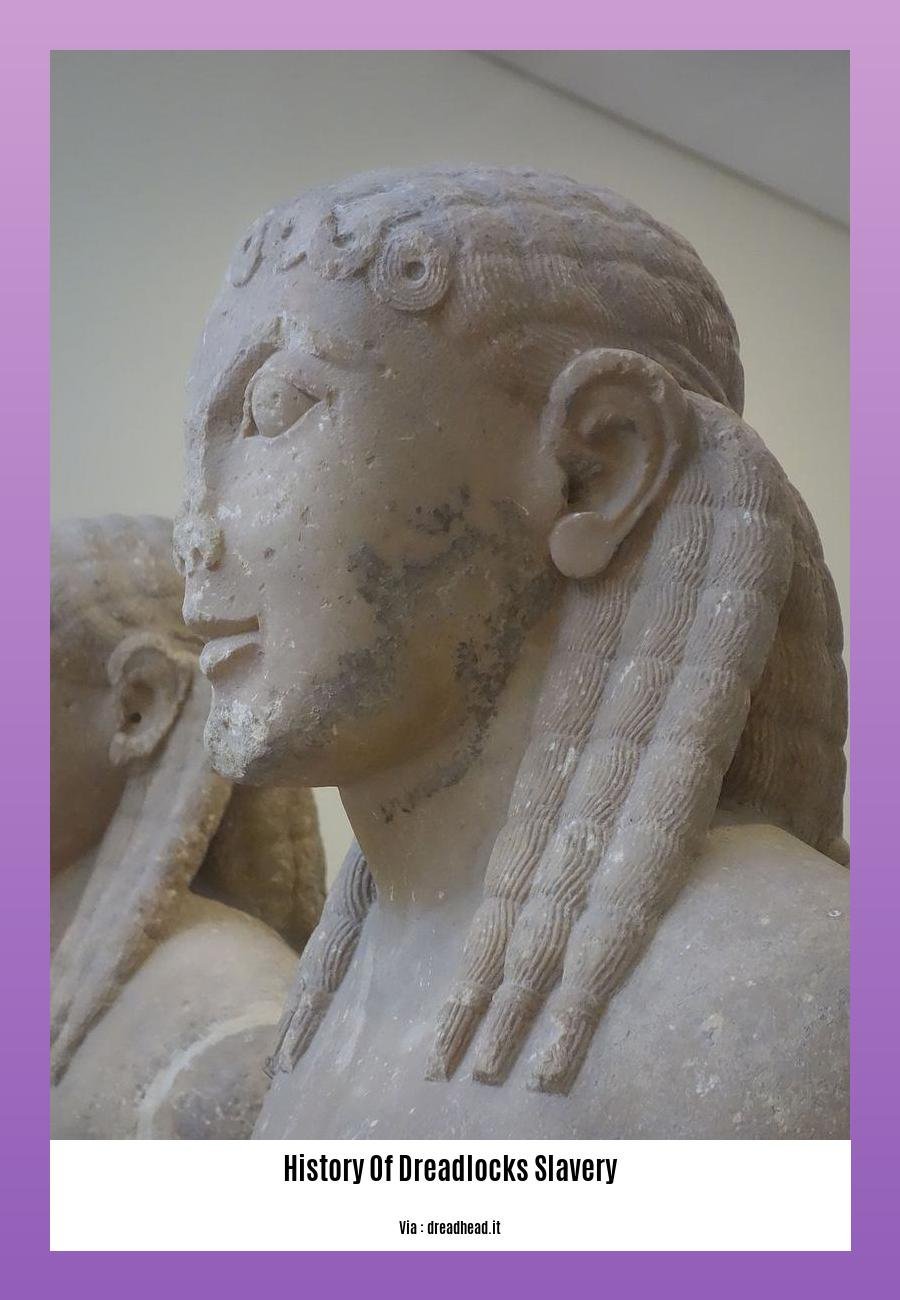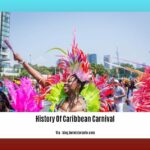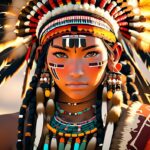In the tapestry of history, dreadlocks stand as a symbol of resilience, resistance, and cultural identity. Yet, their origins are often shrouded in misconception and overlooked in historical narratives. In this article, we embark on a journey to uncover the forgotten strands of dreadlocks, tracing their roots back to the horrors of slavery and shedding light on their profound significance in the struggle for freedom and self-determination. Forgotten Strands: Unveiling the History of Dreadlocks and Their Roots in Slavery delves into the untold stories of enslaved Africans who wore dreadlocks as a symbol of defiance, a connection to their ancestral heritage, and a refusal to succumb to the dehumanizing forces of oppression.
Key Takeaways:
Dreadlocks have ancient origins, found in civilizations such as ancient Egypt and Peru.
Dreadlocks held cultural significance in various societies, representing strength and spirituality.
During the enslavement of Africans, dreadlocks emerged as a symbol of resistance.
In the 20th century, dreadlocks became a defining symbol of Rastafari beliefs, connecting to African heritage.
In modern times, dreadlocks have widespread acceptance, symbolizing individuality and cultural pride.
Despite their significance, dreadlocks have faced discrimination, highlighting the significance of cultural appropriation.
History of Dreadlocks Slavery
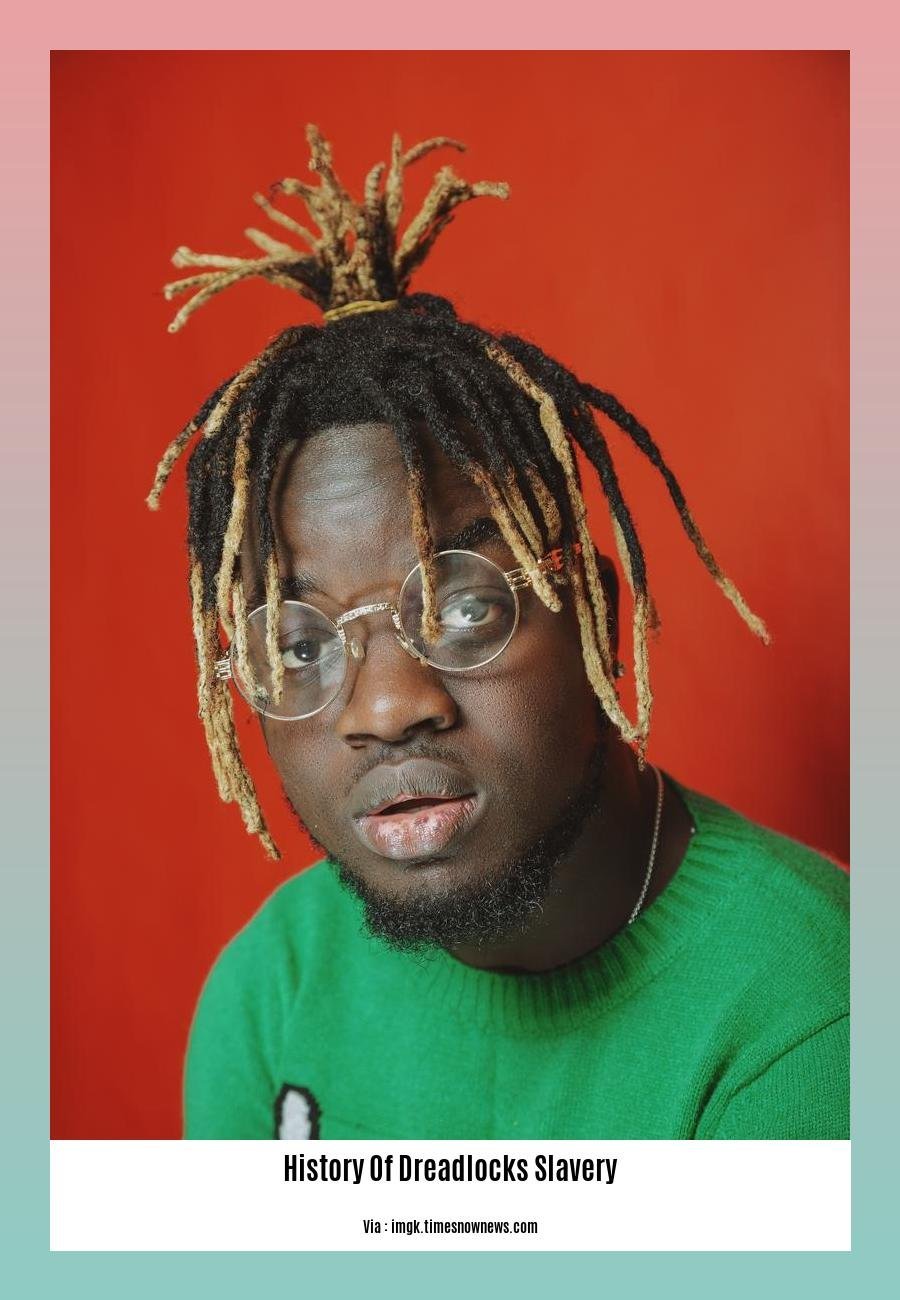
Far from a mere hairstyle, dreadlocks hold a deep, complex history, intertwined with the struggles and triumphs of African peoples. Their roots can be traced back to ancient Egypt, where evidence of locs has been found on mummified remains. In pre-Columbian America, dreadlocks signified spiritual connection and wisdom.
During the abhorrent era of slavery, dreadlocks took on a new meaning. Enslaved Africans, forcibly stripped of their cultural identities, found solace and resistance in their hair. By choosing to grow dreadlocks, they defied the dehumanizing attempts to erase their heritage.
The 20th century saw the rise of the Rastafari movement, where dreadlocks became a symbol of religious devotion and a connection to Jah, the Rastafarian name for God. Dreadlocks represented their African ancestry and their rejection of Eurocentric beauty standards.
In recent decades, dreadlocks have gained wider acceptance and popularity, transcending cultural and societal boundaries. They have become a symbol of individuality, self-expression, and pride.
Curious about the origin of the construction machines that revolutionized building processes? Explore the history of cranes to uncover the fascinating journey of these engineering marvels.
Discover the captivating narrative of the history of cranes machines, the ingenious inventions that transformed construction methods and shaped the modern skyline.
Embark on a journey through time to learn about the history of fabric printing, a transformative process that brought vibrant hues and exquisite patterns to textiles, forever changing the face of fashion and design.
The Evolution of Dreadlocks as a Symbol of Freedom and Liberation
In ancient Africa, dreadlocks were symbols of spirituality and rebellion. They defied Eurocentric beauty norms and asserted their unique identity.
During slavery, dreadlocks became a symbol of resistance and solidarity. They represented the untapped inner strength and resilience of the enslaved, who found comfort and unity in their shared hairstyle.
In the 20th century, dreadlocks became a symbol of the Rastafari movement, which advocated for Black liberation and a return to African roots. Dreadlocks represented a rejection of Western values and a connection to the Rastafarian faith.
Today, dreadlocks have become widely accepted and embraced as a symbol of individuality and self-expression. They have transcended cultural boundaries, and people from all walks of life wear them as a statement of personal style and identity.
Key Takeaways:
Dreadlocks have been worn for centuries, with ancient origins traced to civilizations like ancient Egypt.
In different cultures, dreadlocks have represented spirituality, wisdom, rebellion, strength, and divine connection.
During slavery, dreadlocks became a symbol of resistance, defiance, and unity among enslaved Africans.
The Rastafari movement embraced dreadlocks as a symbol of their religious beliefs, Black liberation, and a connection to their African heritage.
Today, dreadlocks have gained wider acceptance as a symbol of individuality, self-expression, and cultural pride, transcending societal boundaries.
Citations:
[1] Dreadlocks – Wikipedia:
[2] The History of Dreadlocks: A Journey Through Time and Culture:
The Cultural and Social Significance of Dreadlocks in the African Diaspora
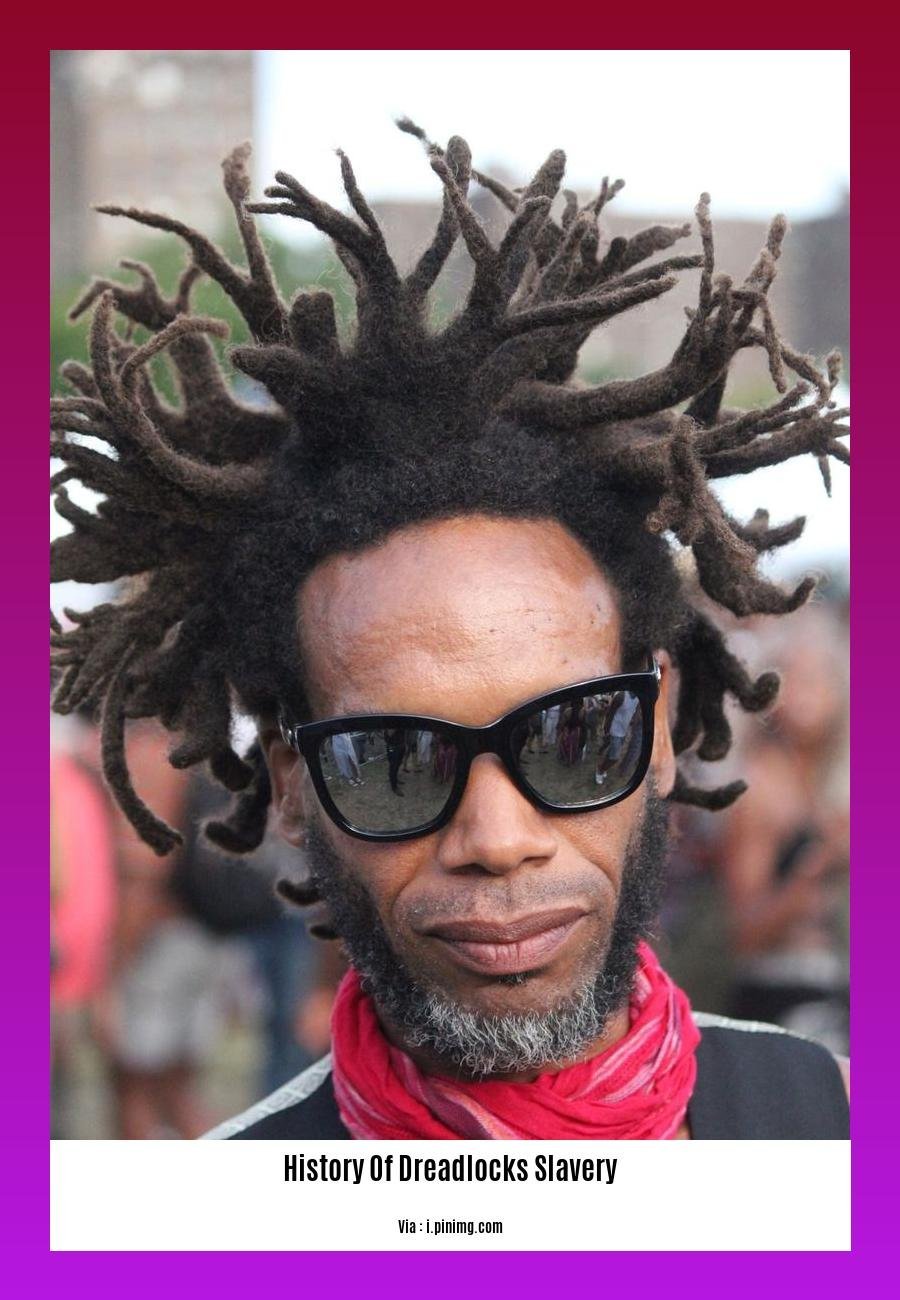
Dreadlocks, also known as locs or dreads, are a hairstyle deeply embedded in the history and culture of the African diaspora. They hold immense cultural, social, and spiritual meanings that have evolved over time, often reflecting resistance, identity, and liberation for people of African descent.
A Symbol of Resistance During Slavery
During the grim days of slavery, dreadlocks served as a symbol of resistance for enslaved Africans, who were stripped of their cultural heritage and forced to adopt European hairstyles. By growing and maintaining their dreadlocks, they defied their oppressors, asserting their individuality and connection to their African roots.
A Symbol of Identity in the Rastafari Movement
In the 20th century, dreadlocks took on new significance within the Rastafari movement. Rastafarians embraced dreadlocks as a symbol of their religious beliefs, cultural identity, and connection to Jah, the Rastafarian name for God. For them, dreadlocks represented a rejection of Western beauty standards and a celebration of their African ancestry.
A Symbol of Empowerment and Liberation
Today, dreadlocks have transcended cultural and societal boundaries, becoming a symbol of empowerment and liberation for people of color around the world. They represent a rejection of Eurocentric beauty standards and a celebration of natural hair texture, promoting self-love and acceptance.
Cultural Significance Across the African Diaspora
Beyond their symbolic meanings, dreadlocks hold deep cultural significance across the African diaspora. In many African cultures, they are associated with strength, wisdom, and spirituality, often representing a connection to one’s ancestors. In some cultures, they are considered a sacred hairstyle worn by religious leaders or during special ceremonies.
Key Takeaways:
- Resistance: Dreadlocks were a symbol of resistance for enslaved Africans, defying Eurocentric beauty standards and asserting their cultural identity.
- Identity: In the Rastafari movement, dreadlocks represented a connection to Jah, cultural identity, and a rejection of Western beauty norms.
- Empowerment: Today, dreadlocks symbolize empowerment and liberation, promoting self-love and acceptance of natural hair texture.
- Cultural Significance: Across the African diaspora, dreadlocks hold deep cultural significance, associated with strength, wisdom, spirituality, and ancestral connections.
Sources
[1] The Cultural History of Dreadlocks (
[2] The History and Cultural Significance of Dreadlocks (
Contemporary Expressions of Identity and Empowerment through Dreadlocks
In a world where individuality and self-expression reign supreme, dreadlocks have emerged as a powerful symbol of identity, empowerment, and cultural pride. Their intricate coils and free-flowing strands have become a canvas for personal narratives, social movements, and a deep connection to one’s heritage.
Origins of Expressive Dreadlocks
Dreadlocks have a rich history, tracing their roots back to ancient cultures across the globe. In many African communities, dreadlocks symbolized strength, spirituality, and a connection to ancestral traditions. During the era of slavery, dreadlocks became a symbol of resistance and resilience, as enslaved people found solace and strength in their natural hairstyles.
Rastafari Movement and Beyond
In the 20th century, the Rastafari movement embraced dreadlocks as a symbol of their religious devotion and connection to Jah, rejecting Eurocentric beauty standards and reclaiming their African ancestry. This movement brought dreadlocks into the global spotlight, inspiring individuals worldwide to embrace their natural hair and challenge societal norms.
Modern Expressions of Identity
Today, dreadlocks continue to evolve as a contemporary expression of identity and empowerment. They are worn by people from all walks of life, transcending cultural and social boundaries. Dreadlocks have become a symbol of individuality, self-love, and a celebration of one’s unique heritage.
Breaking Stereotypes and Embracing Diversity
Dreadlocks have faced their share of scrutiny and controversy, often associated with negative stereotypes and discrimination. However, the growing acceptance and popularity of dreadlocks in recent years have helped break down these barriers. Today, dreadlocks are celebrated as a symbol of diversity, creativity, and the beauty of natural hair.
Key Takeaways:
Dreadlocks have a rich history, representing strength, spirituality, and resistance in various cultures.
The Rastafari movement popularized dreadlocks as a symbol of religious devotion and cultural pride.
In contemporary society, dreadlocks have become a symbol of individuality, self-expression, and a celebration of diversity.
Dreadlocks continue to break stereotypes and challenge societal norms, promoting acceptance and appreciation for natural hair.
Sources:
Dreadlocks: A Symbol of Strength, Resilience, and Identity
The History and Cultural Significance of Dreadlocks
FAQ
Q1: How did dreadlocks become associated with slavery?
A1: During the era of slavery, African slaves were forcibly stripped of their cultural practices and identities, including their hairstyles. Cutting their hair was a common practice among slave owners as a means of control and humiliation. As a result, many slaves grew dreadlocks as a symbol of resistance, defiance, and the preservation of their cultural heritage.
Q2: How did dreadlocks become a symbol of the Rastafari movement?
A2: In the 20th century, the Rastafari movement in Jamaica embraced dreadlocks as a symbol of their cultural identity, religious beliefs, and connection to their African heritage. They saw their dreadlocks, or “locks,” as a representation of their spiritual journey and their connection to Jah (God). Dreadlocks became a distinctive feature of Rastafarian culture, symbolizing their rebellion against societal norms and their commitment to self-determination.
Q3: What is the significance of dreadlocks in contemporary society?
A3: In contemporary society, dreadlocks have become a symbol of individuality, self-expression, and cultural pride. They are worn by people from diverse backgrounds who embrace their heritage, celebrate their uniqueness, and challenge societal norms. Dreadlocks have gained wider acceptance and popularity, becoming a symbol of empowerment and a reminder of the resilience and strength of the African diaspora.
Q4: Why is it important to understand the history of dreadlocks in relation to slavery?
A4: Understanding the history of dreadlocks in relation to slavery is crucial for several reasons. It sheds light on the dehumanizing practices that enslaved people endured and the resilience they demonstrated in preserving their cultural identity. It also highlights the significance of dreadlocks as a symbol of resistance and defiance against oppression. Furthermore, it raises awareness of the ongoing struggle against hair discrimination and the importance of respecting cultural hairstyles.
Q5: How can we promote cultural sensitivity and respect regarding dreadlocks?
A5: Promoting cultural sensitivity and respect regarding dreadlocks requires collective efforts. It involves recognizing dreadlocks as a symbol of cultural heritage and diversity, acknowledging the historical significance they hold, and challenging stereotypes and prejudices associated with them. Embracing inclusivity in workplaces, schools, and society as a whole is essential. Educating ourselves and others about the history and cultural significance of dreadlocks can foster understanding, respect, and appreciation for the diversity of hairstyles and cultural expressions.
- Unlock 6000+ words beginning with he: A comprehensive analysis - April 20, 2025
- Mastering -al Words: A Complete Guide - April 20, 2025
- Master Scrabble: High-Scoring BAR Words Now - April 20, 2025
